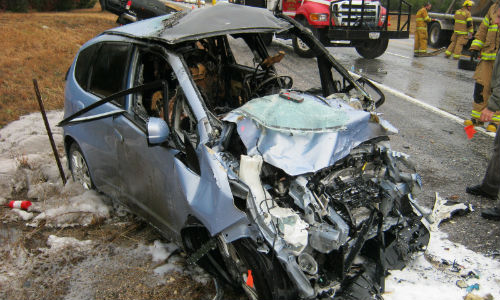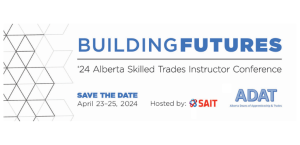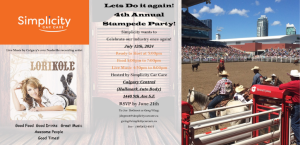By Jeff Sanford
Toronto, Ontario — July 27, 2017 — In this week’s edition of Friday Fun we look into how brokers in BC are under investigation as a result of allegations that they improperly accessed the province’s Autoplan system, a court action in the US that alleges a shop didn’t follow OEM procedures, how weather-related losses are looming over the insurance industry, and much, much more!
– The insurance side of the auto claims economy in BC is in a bit of hot water at the moment. In addition to the financial issues at the Insurance Corporation of British Columbia (ICBC) reported by Collision Repair magazine this week, the Insurance Council of BC says, “… at least three brokers have been penalized for helping drivers avoid paying bills for bridge tolls by entering fake payment receipt numbers into the Autoplan system …” ICBC launched an inquiry into insurance brokers who were improperly accessing the Autoplan system in 2015. In BC, drivers who have not paid tolls on the Port Mann or Golden Ears Bridges are prevented from renewing driver’s licenses or car insurance until the account is cleared. Brokers in the province can bypass a hold placed on a license for a variety of reasons. Turns out some brokers have been taking advantage of their access to the system. More than 100 brokers are said to be under investigation for improperly using the system.
– A number of editorials have appeared in local Ontario papers recently, complaining about the high cost of auto insurance in the province. According to one that appeared in the Cambridge Times, “Despite having one of the lowest rates of collisions and fatalities in the country, Ontario drivers continue to pay the most for vehicle insurance, and the cost isn’t going down.” The editorial goes on to complain about the current system for handling injuries. David Marshall, the former Workplace Safety and Insurance Board CEO, studied and the system and released a report a while back. According to the editorial, “The insurance system favours cash settlements in lieu of care, Marshall found. Sprains and strains — the majority of claims — often take more than a year to settle and about one-third of overall benefit costs goes toward competing expert opinions, lawyers’ fees and insurer costs to defend claims instead of going to treatment … Marshall’s recommendations included adopting a ‘care not cash’ approach, exploring better ways to care for people who are catastrophically injured and making lawyers’ contingency fees more transparent … We’re eager to see his ideas put into action.”
– A court action in the US over improper repairs went public this week. The incident should serve as a warning to all shops about the importance of following OEM guidelines on collision repair. According to a press release put out by the law firm prosecuting the case, the collision centre glued the roof of a Honda Fit back into place, but the Honda guidelines call for welding.
According to the suit, “The defective repair caused the vehicle to crush a Dallas couple when it was hit in a car accident.” The lawyer is quoted as saying, “John Eagle Collision Center, by covering up its arrogant repair of using glue rather than following the manufacturer’s body repair specifications and using welds just like Honda had done when they designed, developed, and tested the vehicle, created a time bomb that was waiting to explode … the defective roof repair caused the car’s safety cage to collapse and the fuel tank located below the driver’s seat to rupture … Trapped behind the steering wheel, Matthew Seebachan remained conscious as flames fried his feet and lower legs before he was pulled from the wreckage by a motorist. Another motorist rescued his wife Marcia through the passenger window of the mangled car.”
Experts who analyzed the car after the accident, “… concluded that had the roof been properly welded by John Eagle Collision Center as specified by Honda’s body repair manual, the Seebachans would likely have had only minor injuries.”
The press release also notes that the couple bought the used 2010 Honda Fit four months before the crash. A CARFAX report shown to the couple at the time, “… did not disclose the roof repair.”
– A report by Reuters notes that, “Weather-related losses loom over the insurance industry,” as several serious weather events, including major hail storms that damaged “thousands of cars” at dealership lots across Texas, Nebraska, Oklahoma.
The damage to the bottom line of insurers is now showing up in second-quarter results. This past week Travelers Companies, “… reported a 10.4 percent drop in second quarter profit, hurt by higher catastrophe losses … Those losses, net of reinsurance, rose to $403 million in the second quarter, from $333 million a year earlier, mainly due to wind and hail storms across the United States, Travelers said.”
The report notes that AIG, Allstate and Hartford will also likely report loses. “All told, US insurers paid out $15.5 billion to cover claims related to severe storms that produced conditions such as hail and fierce winds during the first half of 2017, the second-costliest on record for such damage…,” according to the story. The story also notes that the, “Above average sea-surface temperatures are among factors that could set off a hyper-active Atlantic hurricane season later this year, meteorologists said.”
– A Windsor-based law firm known for launching class action suits, Strosberg Sasso Sutts, announced this week it will sue the big German car makers. As a press release announcing the suit puts it, the firm alleges the European car makers, “… conspired to set the price, output, innovation, and technical standards of components used in the motor vehicles they manufactured, and that were sold in Canada.” Furthermore, “The Notice of Action alleges that these German car manufacturers colluded in this way for over two decades and that the conspiracy caused and is causing significant loss and damage to consumers in Canada who purchased or leased motor vehicles manufactured by the defendants.”
A partner at the firm, Jay Strosberg, was quoted as saying, “Dieselgate resulted in North American settlements valued in excess of $10 billion dollars. It appears that European Union anti-trust regulators have widened their investigation and that German auto manufacturers may have colluded to sell consumers vehicles with components that were, and are, inferior to what has been marketed. Canadian consumers unwittingly may be part of an even more widespread conspiracy than Dieselgate.” The lawsuit seeks $1 billion in damages and an additional $100 million in punitive damages.
This suit didn’t come out of nowhere. A report by Reuters notes that, “EU antitrust regulators are investigating allegations of a cartel among a group of German carmakers, the European Commission said on Saturday, a measure that could result in hefty fines for the companies … The Commission and its German counterpart were tipped off about the possible cartel, the EU competition authority said.”





































